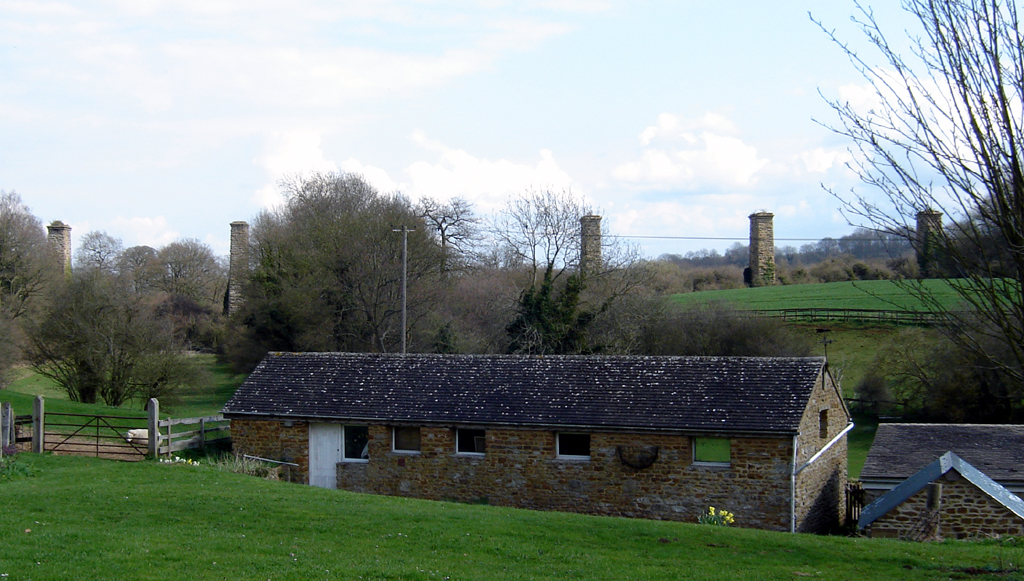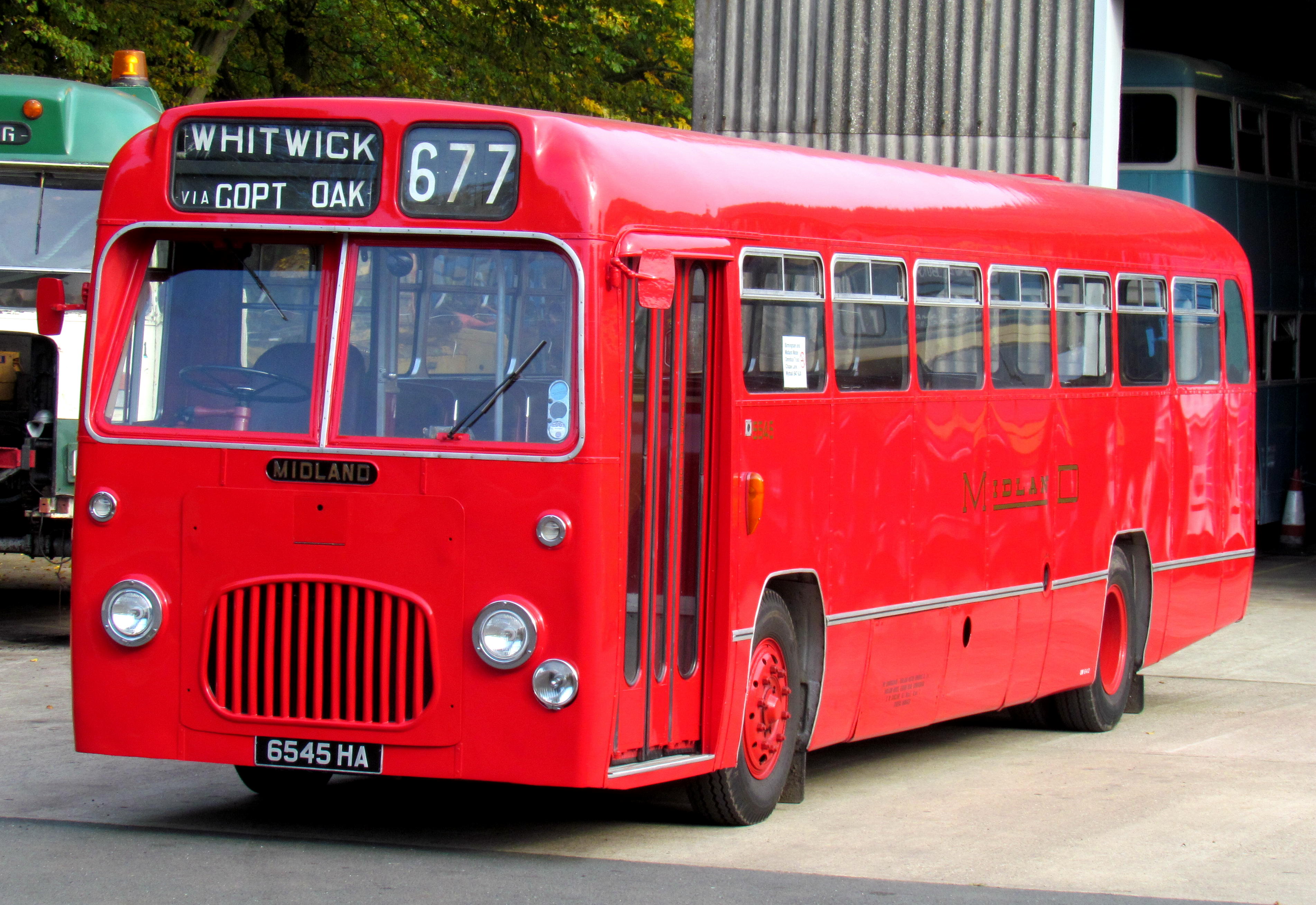|
Hook Norton Railway Station
Hook Norton railway station served the village of Hook Norton in northern Oxfordshire, England. History The station was built for the Banbury and Cheltenham Direct Railway, which was operated by the Great Western Railway before complete takeover in 1897. Following the passing of the Act of Parliament in 1873 authorising the construction of the B&CDR, it was announced in 1874 that a station would be provided at Hook Norton. The location originally proposed was north of the Milcombe Road and a start had been made on construction at this site but this was abandoned in 1883 in favour of a site to the south, slightly nearer the village. On 2 June 1884 it was reported that "Hook Norton Station is built nearly up to the level of the doors". The entire station and goods yard were built on a large embankment containing 120,000 cubic yards of earth, which led onto the first of Hook Norton's two viaducts. In order to provide solid foundations, the platforms were supported on iron girders a ... [...More Info...] [...Related Items...] OR: [Wikipedia] [Google] [Baidu] |
Hook Norton
Hook Norton is a village and civil parish in Oxfordshire, England. It lies northeast of Chipping Norton, close to the Cotswold Hills. The 2011 Census recorded the parish's population as 2,117. The village is formed of four neighbourhoods: East End, Scotland End (in the west), Down End (in the centre) and Southrop (in the south). Toponymy In the ''Anglo-Saxon Chronicle'' in 917 the village is recorded as ''Hocneratun''. The Domesday Book of 1086 records it as ''Hochenartone''. A charter from 1130 records it as ''Hokenartona''. An episcopal register entry from 1225 records it as ''Hokenartone''. A record from 1267 records it as ''Hokenarton''. The ''Taxatio Ecclesiastica'' of 1291 records it as ''Hoke Norton''. Other past spellings of the name include ''Hocceneretune'' (1050), ''Hogenarton'' (1216) and ''Okenardton'' (1263). ''Hegnorton'' is recorded in a plea roll from 1430. The name is derived from Old English. ''Hocca'' may perhaps be the name of a person or tribe, althou ... [...More Info...] [...Related Items...] OR: [Wikipedia] [Google] [Baidu] |
Manning Wardle
Manning Wardle was a steam locomotive manufacturer based in Hunslet, Leeds, West Yorkshire, England. Precursor companies The city of Leeds was one of the earliest centres of locomotive building; Matthew Murray built the first commercially successful steam locomotive, ''Salamanca'', in Holbeck, Leeds, in 1812. By 1856, a number of manufacturers had sprung up in the city, including Kitson and Company, and E. B. Wilson and Company, later The Railway Foundry after 1848. Manning Wardle The Railway Foundry (E.B Wilson from 1838-48) operated in Leeds until 1858. At least some of the company's designs and some materials were purchased by Manning Wardle & Company, who located their Boyne Engine Works in Jack Lane in the Hunslet district of the city. Steam locomotive construction commenced on the site in 1859. Within the next few years, two other companies, the Hunslet Engine Company and Hudswell, Clarke & Company also opened premises in Jack Lane. There was a good deal of st ... [...More Info...] [...Related Items...] OR: [Wikipedia] [Google] [Baidu] |
British Rail
British Railways (BR), which from 1965 traded as British Rail, was a state-owned company that operated most of the overground rail transport in Great Britain from 1948 to 1997. It was formed from the nationalisation of the Big Four British railway companies, and was privatised in stages between 1994 and 1997. Originally a trading brand of the Railway Executive of the British Transport Commission, it became an independent statutory corporation in January 1963, when it was formally renamed the British Railways Board. The period of nationalisation saw sweeping changes in the railway. A process of dieselisation and electrification took place, and by 1968 steam locomotives had been entirely replaced by diesel and electric traction, except for the Vale of Rheidol Railway (a narrow-gauge tourist line). Passengers replaced freight as the main source of business, and one-third of the network was closed by the Beeching cuts of the 1960s in an effort to reduce rail subsidies. On privatis ... [...More Info...] [...Related Items...] OR: [Wikipedia] [Google] [Baidu] |
Transport Act 1947
The Transport Act 1947 (10 & 11 Geo. 6 c. 49) was an Act of the Parliament of the United Kingdom. Under the terms of the Act, the railway network, long-distance road haulage and various other types of transport were nationalised and came under the administration of the British Transport Commission. The BTC was responsible to the Ministry of Transport for general transport policy, which it exercised principally through financial control of a number of executives set up to manage specified sections of the industry under schemes of delegation. Overview The Act was part of the nationalisation agenda of Clement Attlee's Labour government, and took effect from 1 January 1948. In Northern Ireland, the Ulster Transport Authority acted in a similar manner. The government also nationalised other means of transport such as: canals, sea and shipping ports, bus companies, and eventually, in the face of much opposition, road haulage. All of these transport modes, including British Railways, ... [...More Info...] [...Related Items...] OR: [Wikipedia] [Google] [Baidu] |
Midland Red
Midland RedCompanies House extract company no 82681 Midland Red Omnibus Company Limited formerly Birmingham & Midland Motor Omnibus Company Limited was a bus company that operated in from 1905 until 1981. It was one of the largest English bus companies, operating over a large area between in the south and in the north, and from |
Narrow Gauge
A narrow-gauge railway (narrow-gauge railroad in the US) is a railway with a track gauge narrower than standard . Most narrow-gauge railways are between and . Since narrow-gauge railways are usually built with tighter curves, smaller structure gauges, and lighter rails, they can be less costly to build, equip, and operate than standard- or broad-gauge railways (particularly in mountainous or difficult terrain). Lower-cost narrow-gauge railways are often used in mountainous terrain, where engineering savings can be substantial. Lower-cost narrow-gauge railways are often built to serve industries as well as sparsely populated communities where the traffic potential would not justify the cost of a standard- or broad-gauge line. Narrow-gauge railways have specialised use in mines and other environments where a small structure gauge necessitates a small loading gauge. In some countries, narrow gauge is the standard; Japan, Indonesia, Taiwan, New Zealand, South Africa, and the Aust ... [...More Info...] [...Related Items...] OR: [Wikipedia] [Google] [Baidu] |
Hook Norton Ironstone Quarries (Brymbo)
The Hook Norton ironstone quarries (Brymbo) were ironstone quarries near Hook Norton in Oxfordshire, England. The quarries were in operation from 1899 to 1946 supplying ironstone to the Brymbo Steelworks in Wrexham and were served by the Brymbo Ironworks Railway, an extensive, Narrow gauge railway, narrow gauge industrial railway. History Brymbo Ironworks The original Brymbo Steelworks, Brymbo Ironworks was founded near Wrexham in Wales in 1798 by John Wilkinson (industrialist), John Wilkinson. Wilkinson was a pioneer of the industrial revolution and made a significant fortune from his ironworks. When he died in 1808 his company was held in trust for many years due to a legal dispute over his will. In 1842 a new company was formed to run the Brymbo Ironworks and following successful steel-making experiments the Brymbo Steel Company was incorporated in 1884. Hook Norton quarries and kilns By 1897 the works was close to exhausting its source of ironstone near Wrexham and sou ... [...More Info...] [...Related Items...] OR: [Wikipedia] [Google] [Baidu] |
Wrexham
Wrexham ( ; cy, Wrecsam; ) is a city and the administrative centre of Wrexham County Borough in Wales. It is located between the Welsh mountains and the lower Dee Valley, near the border with Cheshire in England. Historically in the county of Denbighshire, and later the county of Clwyd in 1974, it has been the principal settlement of Wrexham County Borough since 1996. Wrexham has historically been one of the primary settlements of Wales. At the 2011 Census, it had an urban population of 61,603 as part of the wider Wrexham built-up area which made it Wales's fourth largest urban conurbation and the largest in north Wales. The city comprises the local government communities of Acton, Caia Park, Offa and Rhosddu. Wrexham's built-up area extends further into villages like Bradley, Brymbo, Brynteg, Gwersyllt, New Broughton, Pentre Broughton and Rhostyllen. Wrexham was likely founded prior to the 11th century and developed in the Middle Ages as a regional centre for t ... [...More Info...] [...Related Items...] OR: [Wikipedia] [Google] [Baidu] |
Brymbo Steelworks
The Brymbo Steel Works was a former large steelworks in the village of Brymbo near Wrexham, Wales. In operation between 1796 and 1990, it was significant on account of its founder, one of whose original blast furnace stacks remains on the site. History John Wilkinson's ironworks The works was founded by the pioneer industrialist John 'Iron Mad' Wilkinson. Wilkinson, who had owned the nearby Bersham Ironworks jointly with his brother William, purchased Brymbo Hall and its 500-acre estate from the Assheton-Smith family in 1792 for the sum of £14,000, some of which may have been lent by Boulton and Watt.Davis, RJohn Wilkinson - Ironmaster Extraordinary The estate was rich in coal and ironstone deposits, several small coal pits having existed even before Wilkinson purchased the estate. By 1796 Wilkinson had erected the first blast furnace on the site, east of the Hall, 884 tons of iron being produced in this first year. This initial furnace ("No. 1") worked continuously until 1 ... [...More Info...] [...Related Items...] OR: [Wikipedia] [Google] [Baidu] |

.jpg)


_of_Brymbo_(GC)_Station_by_Brymbo_Steelworks_-_geograph.org.uk_-_1928452.jpg)